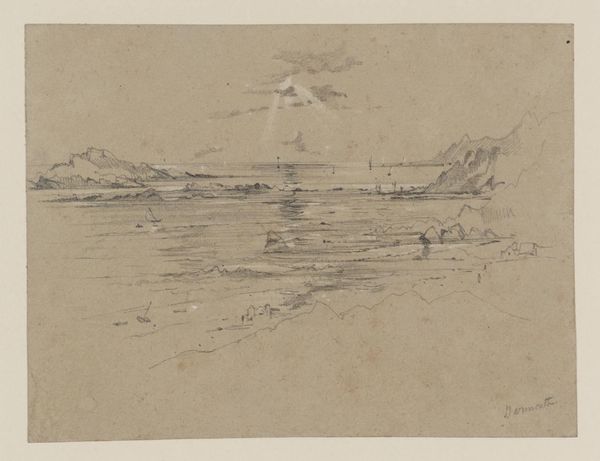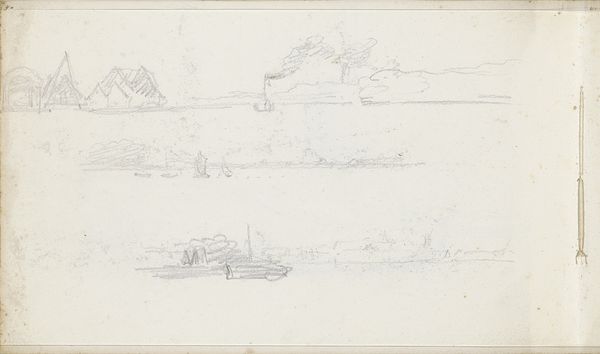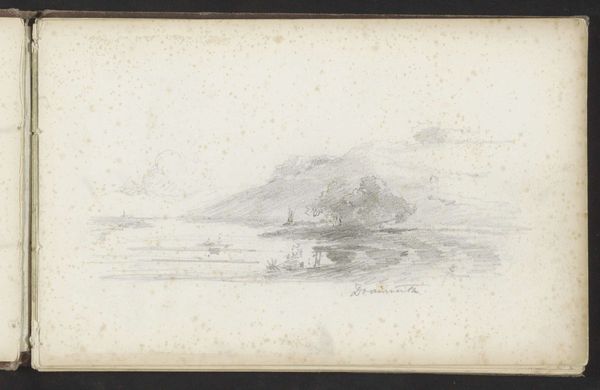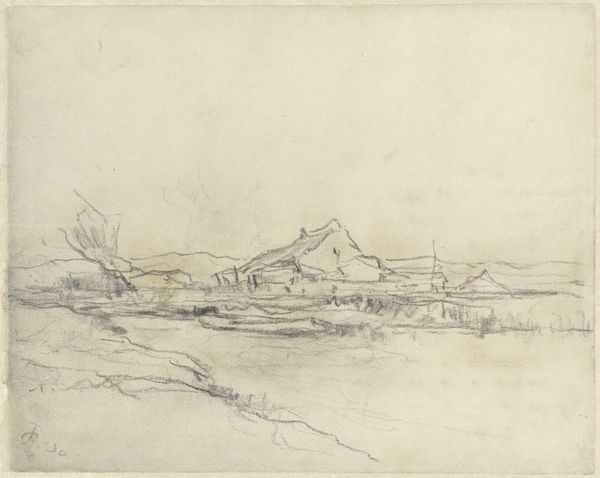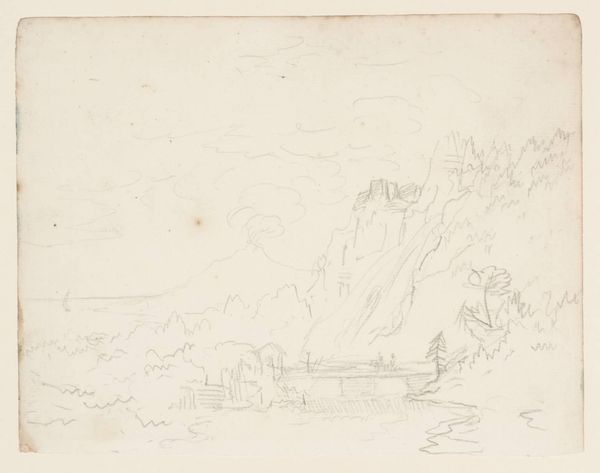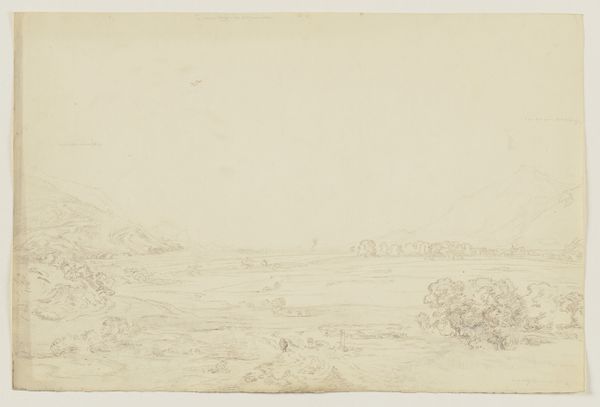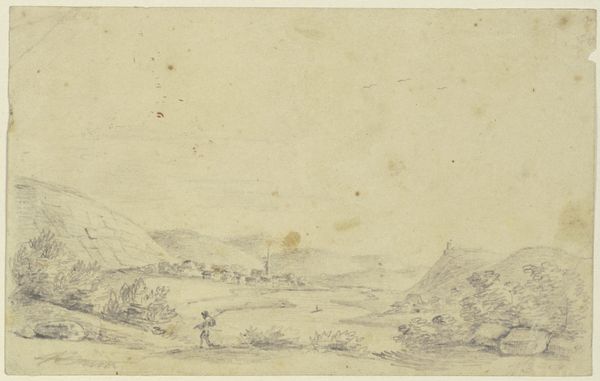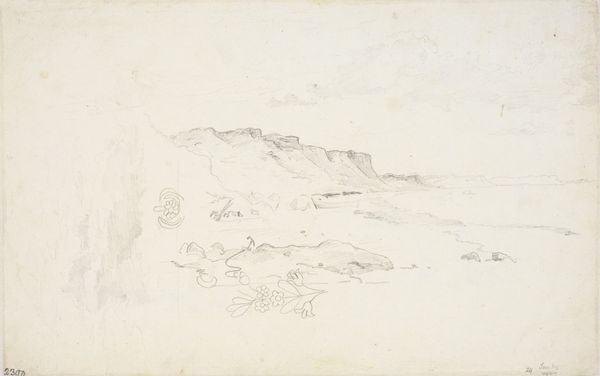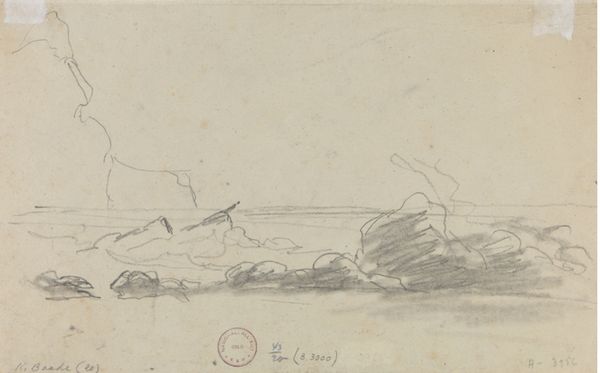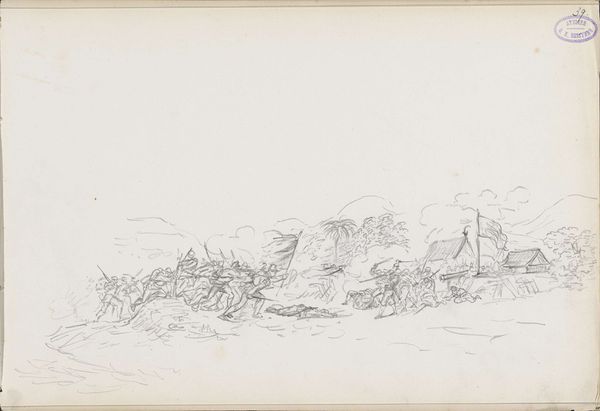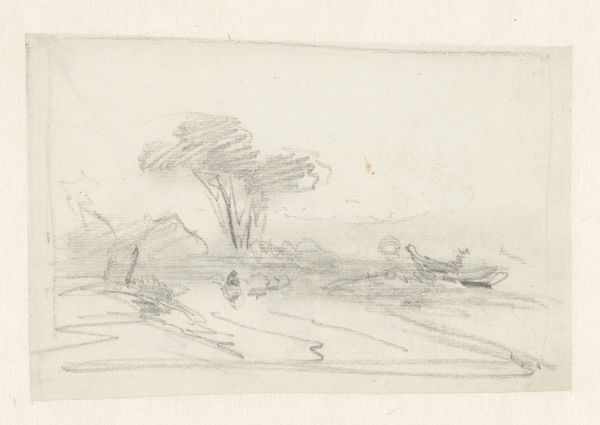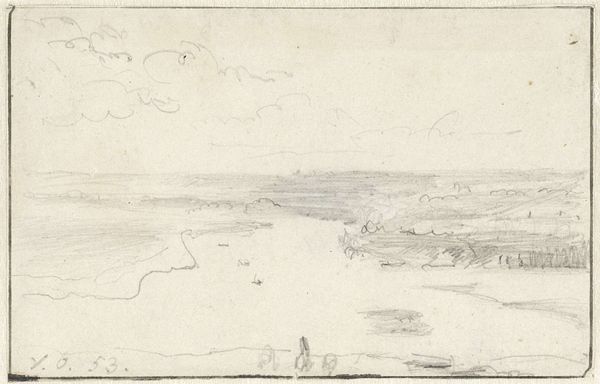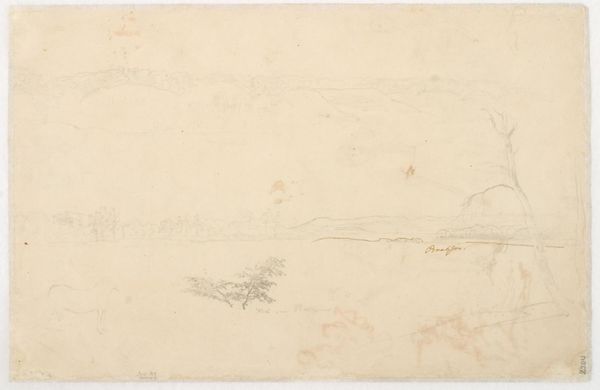
Sketch of Mont Saint Michel (recto); Buildings Beside Water (verso) c. 1818
0:00
0:00
drawing, paper, pencil, graphite
#
drawing
#
pencil sketch
#
landscape
#
paper
#
england
#
romanticism
#
pencil
#
graphite
Dimensions: 74 × 138 mm
Copyright: Public Domain
Editor: Here we have John Sell Cotman's "Sketch of Mont Saint Michel," dating from around 1818, rendered in graphite and pencil on paper. The atmospheric quality really strikes me; the way the forms emerge subtly from the page. What do you see in this piece? Curator: The interest lies primarily in the application of graphite itself. Cotman masterfully exploits the tonal range achievable with pencil, building up layers of subtle gradations. Observe how the lines coalesce to create a sense of mass and volume in Mont Saint Michel. Notice how light dances across the structure solely through manipulation of graphite density. Editor: Yes, it's like he’s building the form out of pure light and shadow. Is the seemingly unfinished quality intentional? Curator: Perhaps “unfinished” is not quite the term. Rather, consider it a study in form and light. The seemingly spare application directs focus to the fundamental geometric shapes underpinning the landscape. The work privileges the essence of the subject over meticulous detail, distilling it to its core visual components. It emphasizes artistic intention over exact depiction. Editor: I see. So, by stripping it down, he’s highlighting those formal elements. I was expecting Romanticism to be more expressive, but this is more subdued. Curator: Indeed. It diverges from dramatic excesses often associated with Romanticism, and yet this subdued tonal study generates its own kind of feeling. Notice how horizontal lines structure and ground the piece, contrasted against the dominating form looming. A certain emotive restraint is what captures my attention in it. What do you think of the building shapes? Editor: It’s made me think differently about the way artists use sketching, how something seemingly incomplete can be so powerful formally. Curator: Precisely. Recognizing art within the bare architecture itself prompts another viewing experience.
Comments
No comments
Be the first to comment and join the conversation on the ultimate creative platform.
